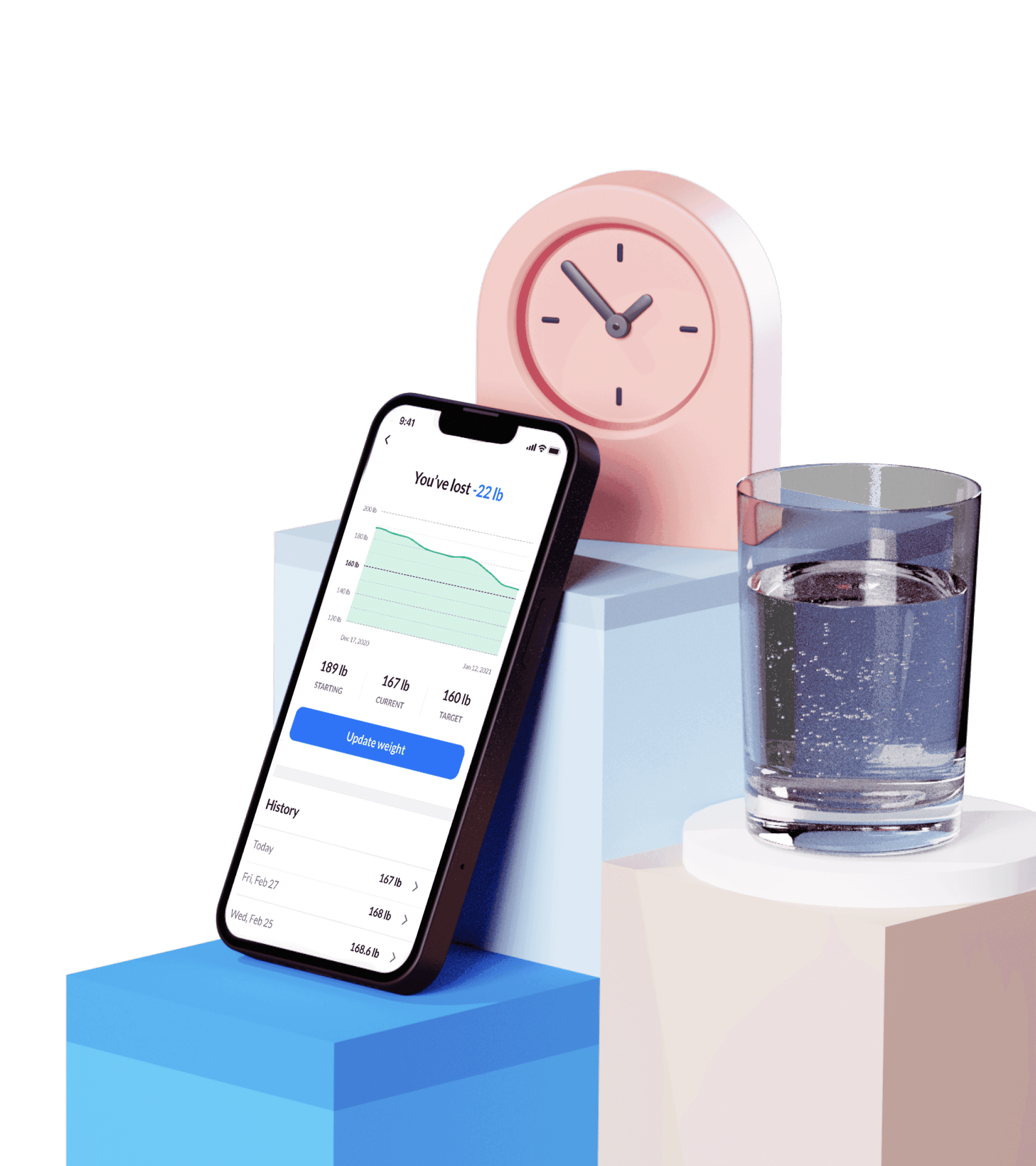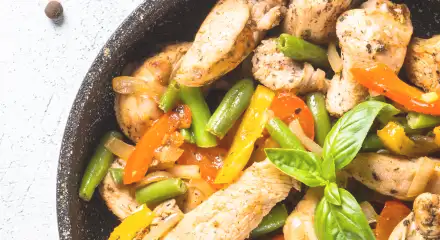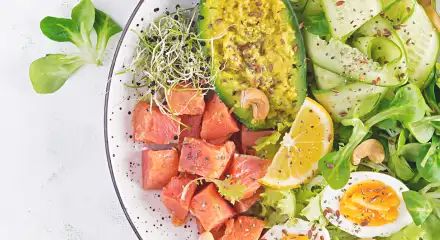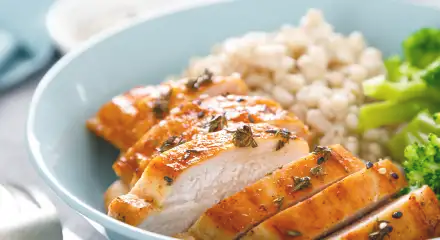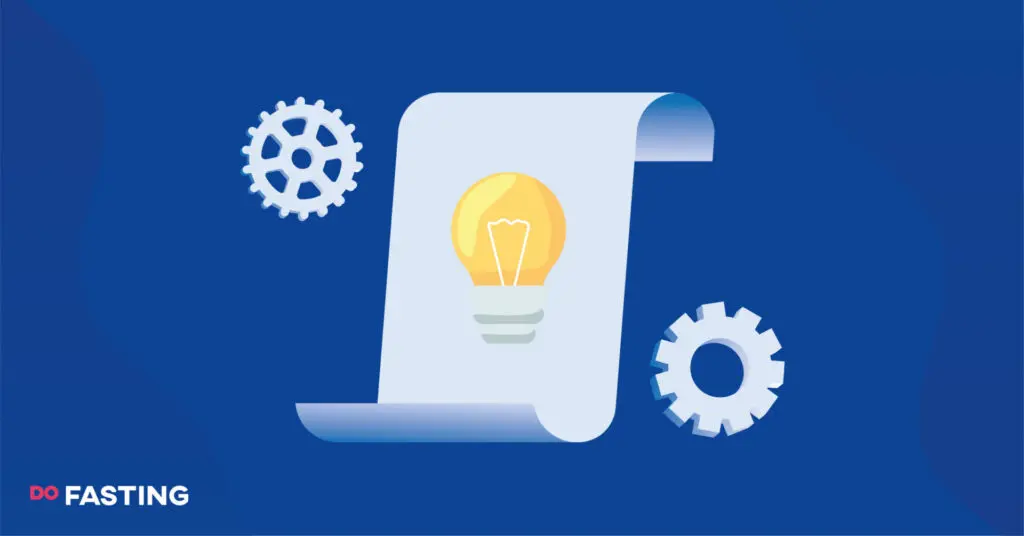Contents
Intermittent Fasting Example Meal Plan
Intermittent fasting has taken the health and fitness world by storm recently, and for good reason— intermittent fasting works!
It’s one of the best ways to change to a healthy lifestyle for fat loss and many health benefits. Some of these associated advantages include low blood pressure and blood sugar levels, less insulin resistance and insulin levels, and a reduced risk of heart disease.
When you commit to an intermittent fasting schedule, your weight loss essentially involves fasting with a lower caloric intake, paired with a feeding window on non-fasting days.
This causes a metabolic switch to occur, and as your body adjusts, launches you into ketosis and your maximum fat-burning potential.
And how fast you lose weight depends highly on the type of intermittent fasting plan you choose— different plans require a different diet, eating pattern, and fasting regimen.
That is one reason why intermittent fasting meal plans vary: the healthy diet outside of your fasting period might only be 6 hours long, or a whole day. And the right eating plan for you depends on this window for a calorie deficit, based on the type of fasting you do.
To figure out the particulars of your fasting diet, download the DoFasting app to calculate your daily intake, level of physical activity, and the type of intermittent fasting meal plan that will work for you.
You can also find a myriad of recipes on the DoFasting app from a variety of eating plans, including vegan, lactose-free, gluten-free, low-carb, keto, and many more.
In fact, with over 5,000 recipes for you to choose from, using DoFasting means that mealtime will never be boring again!
Now, let’s go over a sample intermittent fasting meal plan for some of the most popular fasting types that can help with healthy weight loss and better overall health and wellbeing— the 14:10, 16:8, and 5:2 methods.
Take a
1-minute quiz
and discover how much weight you can lose with DoFasting!

14:10 Faster Meal Plan
Great for beginners to the world of fasting, the 14:10 method involves a fasting period of 14 hours, with 10 hours of a feeding window.
Due to this intermittent fasting schedule, you can generally approach a day of 14:10 depending on your needs. To eat early for work, your feeding window would last between 7:30 a.m. for your first meal and 5:30 p.m. for your last.
If you don’t want to skip breakfast but want dinner later, eat at 9:30 a.m., then have lunch or a large snack at around 1:30 p.m., and make sure dinner is finished by 7:30 p.m.
Then you fast for the rest of the evening and overnight, ready to break your fast the next morning.
This is a great intermittent fasting schedule for those who need more energy during the day, want to improve their sleep, or are working their way up to a more stringent fasting type.
A sample intermittent fasting meal plan for two on a 14:10 day could comprise of:
- Meal One— Granola with Fruits and Berries (Calories: 454; Fats: 12.2 g; Carbs: 52.1 g; Protein: 35.4 g).
- Meal Two— Beef Stir-Fry with Bok Choy (Calories: 674; Fats: 25.9 g; Carbs: 68.9 g; Protein: 40.9 g).
- Meal Three— Turkey Meatballs with Pasta (Calories: 361; Fats: 14 g; Carbs: 40 g; Protein: 19.2 g).
Take a
1-minute quiz
and discover how much weight you can lose with DoFasting!

Meal Ideas for 16:8 (Intermediate) Faster
One step up on the scale of intermittent fasting schedule types, the 16:8 method has a shorter eating window for your daily calorie intake. With this plan, you fast for 16 hours and only eat during the remaining 8 hours of the day.
For example, your eating plan might follow something like this with 16:8— feeding yourself between 10 a.m. to 6 p.m., noon to 8 p.m., or 1 p.m. to 9 p.m.
Essentially, this eating pattern tends to function like a work shift, depending on what meals you want to eat and when.
The 16:8 schedule is great for those already familiar with intermittent fasting and who want to improve cognitive and cardiovascular health and shed any excess weight gain, all while eating a healthy diet.
A sample intermittent fasting meal plan for two as 16:8 fasters might include these dishes:
- Meal One— Scrambled Eggs on Toast (Calories: 379; Fats: 19 g; Carbs: 27 g; Protein: 25 g).
- Meal Two— Quinoa with Chickpeas and Feta (Calories: 458; Fats: 9.9 g; Carbs: 57.3 g; Protein: 34.3 g).
- Meal Three— Chicken and Cabbage (Calories: 755; Fats: 61.2 g; Carbs: 13.3 g; Protein: 37.2 g).
Meal Plans for Fasters on 5:2 Diet
Essentially a type of alternate-day fasting, the 5:2 diet involves eating normally for five days, and using calorie restriction for two non-consecutive days of the week.
During your fasting days, you should not exceed 500-600 calories, which are typically split by eating 2 meals a day.
When you eat your two meals during this fasting diet doesn’t matter as much, so long as you stay beneath the calorie limit. But many people find it better to eat in the late morning and again in the evening to keep feeling full for longer.
This is a great intermittent fasting meal plan for people with busy schedules who don’t have many days to devote to fasting. Instead, by alternate-day fasting, you can tailor this fasting meal plan to your lifestyle, and still lose weight by doing so.
A sample intermittent fasting meal plan for two during the 5:2 schedule could have:
- Meal One— Wrap with Feta Cheese and Olives (Calories: 184; Fats: 6.1 g; Carbs: 21.8 g; Protein: 10 g).
- Meal Two— Creamy Pesto Chicken (Calories: 316; Fats: 23 g; Carbs: 6.8 g; Protein: 20.6 g).
Foods You Should Avoid During Intermittent Fasting
You are not necessarily limited in terms of what to eat during intermittent fasting, but there are some foods to avoid entirely even outside of a restriction window.
In general, you should try to pursue clean eating while intermittent fasting— meaning no fast food, refined sugar or starches, sugary beverages or sodas, processed meat, trans-fats, or alcoholic drinks.
Eating these foods will not only sabotage your meal plan and overall diet, but also increase your risk of heart disease, diabetes, high cholesterol, and other issues.
What Can You Drink During the Fasting Window?
While you cannot eat solid foods during a fasting period, some beverages are perfectly acceptable. This includes water, unsweetened tea, green tea, black coffee, and even bone broth! None of these low or zero-calorie drinks will break your fast.
Does Lemon Water Break a Fast?
If you are tired of plain water, adding some lemon to your glass of water won’t break a fast.
That’s because the typical calories in lemons are not high enough to affect your metabolism and stop it from burning fat, as stopping your fast requires more than 50 calories. Lemon juice has significantly less, so squeeze away!
However, be cautious of lemonade or any drinks that use sugar and other additives to enhance your water, as those calorie counts will undoubtedly break your fast.
4 Reasons Why You Are Gaining Weight During Intermittent Fasting
Even if you are following an intermittent fasting meal plan, there is still the possibility of weight gain. There are four primary reasons for this, so read on to find out why.
-
Having Too Many Calories During the Eating Window
Even if you are only eating 2 meals a day, your weight loss and diet will suffer if those foods are high in calories— this will slow your metabolism down and stop ketosis in its tracks, along with fat burning.
What to eat during intermittent fasting includes low-calorie items like whole grains, leafy greens like brussels sprouts, lean protein, and healthy fats like olive oil or coconut oil.
A balanced diet will keep you full longer and not cause weight gain.
-
Starving and Overeating Later
Eating less food doesn’t necessarily make for a good intermittent fasting meal plan.
Your meals should be well-balanced and low in calories, but without a massive deficit that makes your body think that it’s starving and instinctively slow your metabolism and weight loss.
-
Eating Too Little Protein
One of the benefits of intermittent fasting is being able to lose fat while building lean muscle mass. But if you are not eating enough protein, it’s much harder to do this.
Additionally, eating protein is a great way to fill yourself up for longer, and avoid hunger pangs to get through fasting windows easier. The hungrier you are, the more likely you are to overeat and gain weight!
-
Excessive Use of Sugar
Sugary foods are high in calories, and sugar has been linked to obesity, diabetes, and bad heart health. So, it’s important to cut sugar out of your diet for the best results, and to avoid regaining weight or negative health effects.
How Long Does It Take To Notice Results From Fasting?
Everyone who wants to lose weight likely also wants to see the results. And with intermittent fasting, it’s no different.
Given the safe amount of weight to lose per week is one to two pounds, many people see a significant change from fasting around four to six weeks. That’s because the body has shed most of its water weight, and has started to burn fat.
But once you lose about ten pounds, likely within eight weeks, that’s when many dieters notice a tangible difference— and because ten pounds is a full pant size, such successful weight loss is seen in inches around the waist and other problem areas!
Take a
1-minute quiz
and discover how much weight you can lose with DoFasting!

Conclusion
Intermittent fasting is a great method for weight loss, as well as many other associated health benefits— from low blood sugar to reduced risk of heart disease.
And one of the keys to success in fasting is planning meals in advance. Not only does this save you time and energy, but you can stick to your fasting and feeding windows much easier when the meal is already figured out!
By using an intermittent fasting meal plan for a well-balanced diet, your success in losing weight and living a healthier lifestyle will be easier than ever.
See how DoFasting will improve your life
Find out what works for you with this 60-sec quiz approved by our experts and get your personal revolutionary fasting assistant.
Start the Quiz